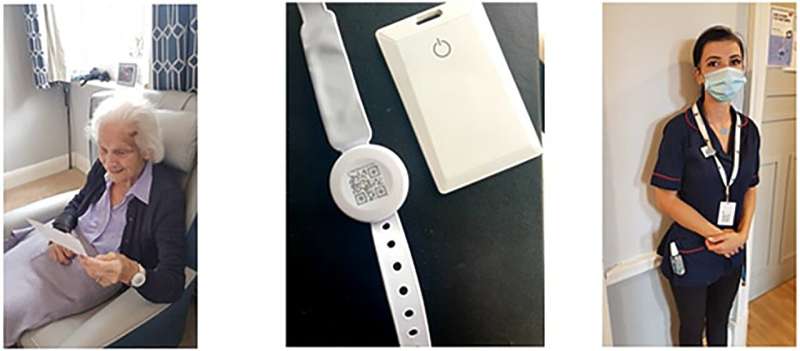This article has been reviewed according to Science X's editorial process and policies. Editors have highlighted the following attributes while ensuring the content's credibility:
fact-checked
peer-reviewed publication
trusted source
proofread
Bluetooth tracking devices provide new view into care home quality

Wearable Bluetooth devices can shed light on the care that residents of care homes are receiving and which residents are most in need of social contact, according to a new study published this week in the open-access journal PLOS ONE by Carl Thompson of University of Leeds, U.K.
In the U.K. alone, nearly half a million people reside in some form of care home, including long-term care facilities, nursing homes and residential homes. There is no single reliable method that works well to evaluate care home quality, in part because care homes are complex social systems with diverse interacting groups.
In the new study, researchers tested the feasibility of collecting social network metrics on people in care homes by using Bluetooth devices worn by both staff and residents. More than 250 people in four U.K. care homes were involved in the study. Over two months, the researchers collected data on 204,087 interactions between people.
Just 2% of all interactions recorded by the devices lasted longer than two minutes, and more than 65% of those longer interactions were between staff members. Moreover, in only 1 of the 4 care homes did residents have as many social interactions as staff.
Overall, most interactions between people occurred in communal areas such as dining rooms and lounges, with staff and smoking rooms also being focal points for interactions.
The data also allowed researchers to identify staff and residents with the strongest and weakest social connections to their communities, based on the frequency and length of their interactions with other people.
The study was limited by the fact that data was collected in only four homes and was not collected with any context or any information about whether a social interaction generated positive or negative feelings. However, the authors conclude that wearable devices worn by care home residents and staff are capable of generating useful data for quality improvement.
Data emerging from this study could be utilized to implement initiatives aimed at improving the lives of residents by reducing their isolation and increasing interaction between staff and residents.
The authors add, "Relationships and social contact are what transforms merely safe and adequate long term care into high-quality, outstanding, long term care. This paper shows how wearable contact tracing technology can help ensure social contact and relationships are a part of quality long term care for more people that live and work in care homes."
More information: Quality in care homes: How wearable devices and social network analysis might help, PLOS ONE (2024). DOI: 10.1371/journal.pone.0302478


















